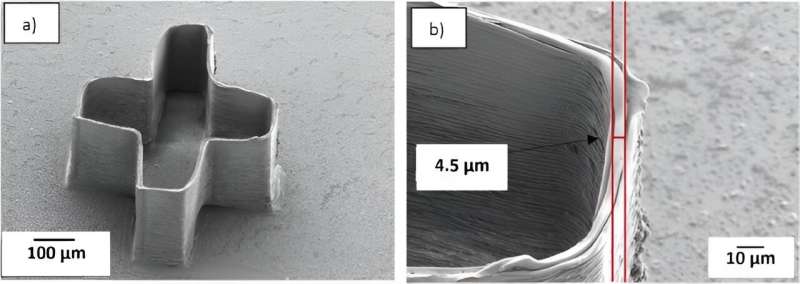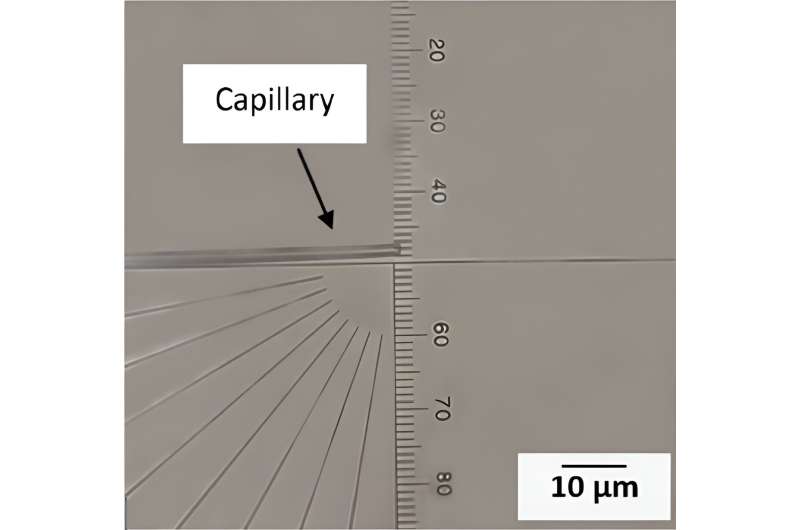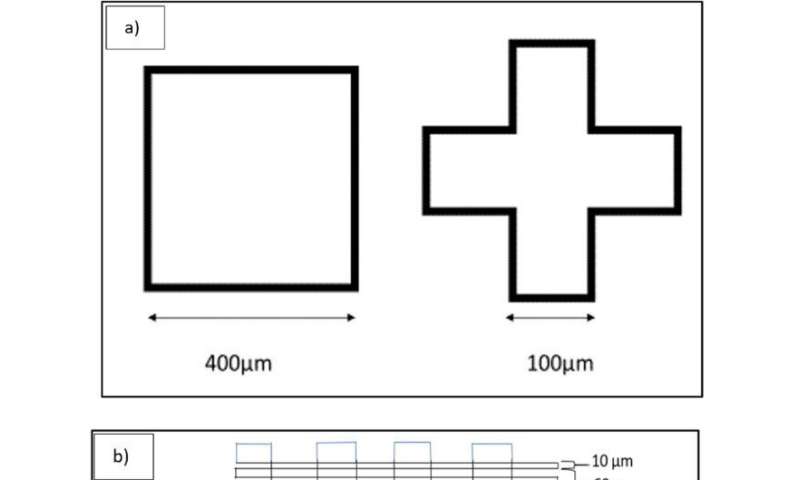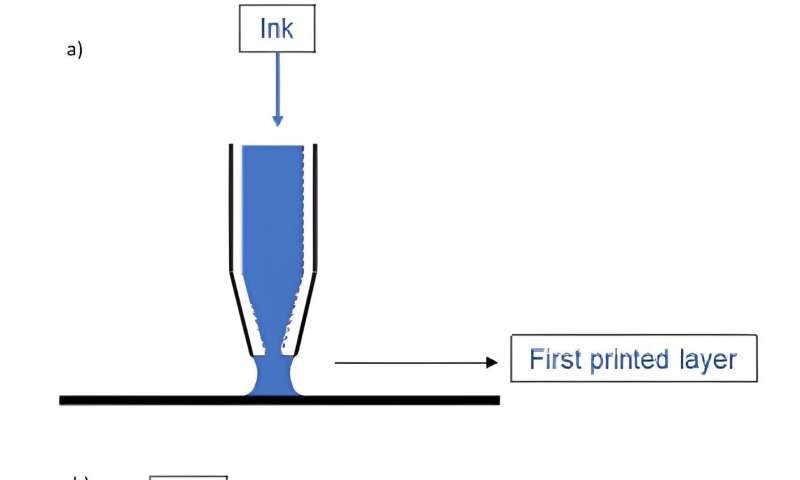December 14, 2023 feature
This article has been reviewed according to Science X's editorial process and policies. Editors have highlighted the following attributes while ensuring the content's credibility:
fact-checked
peer-reviewed publication
trusted source
proofread
Direct ink writing of high-resolution cellulose structures

Three-dimensional (3D) printing has a significant role in membrane production for water purification and bio-separation, with capacity to create new and cleverly designed structures.
Among the available 3D printing methods, the strategy of direct ink writing offers a process to print a wide variety of materials with high resolution. In a new report now published on Scientific Reports, Farnaz Rezaei and a team of researchers at the Uppsala University Sweden, used cellulose acetate as a biocompatible ink material.
The researchers noted the printability and possibility of printing features as small as a few micrometers to examine the development of cellulose acetate with varying molecular weights. The nozzle's internal and external diameters affected the detailed resolution of the printed structure. The researchers used different inks to result in different widths of printed strands and successfully completed direct writing with high-resolution cellulose structures.

Additive manufacturing
3D printing or additive manufacturing methods facilitate the development of complex 3D structures through layer-by-layer deposition of materials on a select substrate by using computer-aided design methods. The method has shown its capacity to produce structures with well-regulated intricate geometries, to offer several advantages beyond conventional biomanufacture, and form complex geometries.
The cost-effective resourcefulness is an added advantage of the method. These methods are applicable across a variety of fields including drug delivery, microfluidics, and separation systems, suited for waste-water treatment, biomedical devices, and membrane chromatography.
The demand for high-resolution detail has however, limited the use of additive manufacturing. Direct writing provides a dispersing-based method to deposit the desired ink material through a nozzle onto a substrate, and provide a host of printable materials including polymers, hydrogels, ceramics, and metals.

Direct ink writing with cellulose acetate
Cellulose has attracted extensive attention as a legitimate raw material for 3D printing applications due to its excellent performance. The scientists chose cellulose in this work due to its renewable, degradable, and abundant nature. Cellulose is also a bioactive polymer, with broader applications.
Rezaei and colleagues studied the membrane structures including wetting properties, ink composition, and nozzle diameter that affected the printing process during this study. They explored the influence of the nozzle dimensions, which included the inner and outer dimensions to study the possibility of printing structures with micron-level detail resolution.
They used borosilicate glass capillaries to prepare the nozzles, formulated the ink to fill the syringe, and set up printing to create patterns, including test structures followed by characterizing the contact angle of inks, and examining them with scanning electron microscopy.
The performance of the ink
To explore the effect of printing with capillaries with diverse diameters, the team printed 10% cellulose acetate ink on an uncoated glass substrate to investigate the phenomenon.
By studying the diverse ink ratios, they achieved varied printability and resolution, then they examined the mechanisms of regulating the size of the printed structures. For instance, direct ink writing included wetting between the ink and the surfaces, influenced the printing process.
To study the influence of factors regulating the size of the printed strands, the scientists examined the wettability of the inks by including diverse amounts of cellulose acetate on coated and uncoated glass substrates.
During direct ink writing, the wetting between the ink and surfaces of materials influenced the printing process. Rezaei and team studied the structures of the ink to design architectures, and observed the capacity of diverse printing patterns to create a wall or a bridge.
-

(a) Structure one; cubic and cross shaped structures (b) structure two; parallel lines in a rectangular pattern (c) Structure three; shift between layers. Credit: Scientific Reports, doi: 10.1038/s41598-023-49128-8 -

The illustration shows the pitch, inter-strand distance, and width of the strand. Credit: Scientific Reports, doi: 10.1038/s41598-023-49128-8
Outlook
In this way, Farnaz Rezaei and colleagues showed the possibility of building cellulose acetate structures of up to 300 layers with a direct ink writing method. The scientists obtained high detail resolution by regulating the nozzle dimensions and printing parameters, as well as the molecular weight and concentrations of the cellulose acetate in the ink.
The team noted the wetting properties of the ink on the substrate and the nozzle in combination with the ink composition to influence the width of the strand. When they printed membrane-type structures, and free-hanging strands they obtained widths similar to or smaller than the inner diameter of the nozzle. To achieve the desired resolution, the researchers explored printing speeds in various directions to maintain extended printing times for larger structures.
For future work, the team proposes exploring the design of multi-nozzles in tandem with ink-jet printing to enhance the speed of printing.
More information: Farnaz Rezaei et al, Direct ink writing of high-resolution cellulose structures, Scientific Reports (2023). DOI: 10.1038/s41598-023-49128-8
Journal information: Scientific Reports
© 2023 Science X Network





















